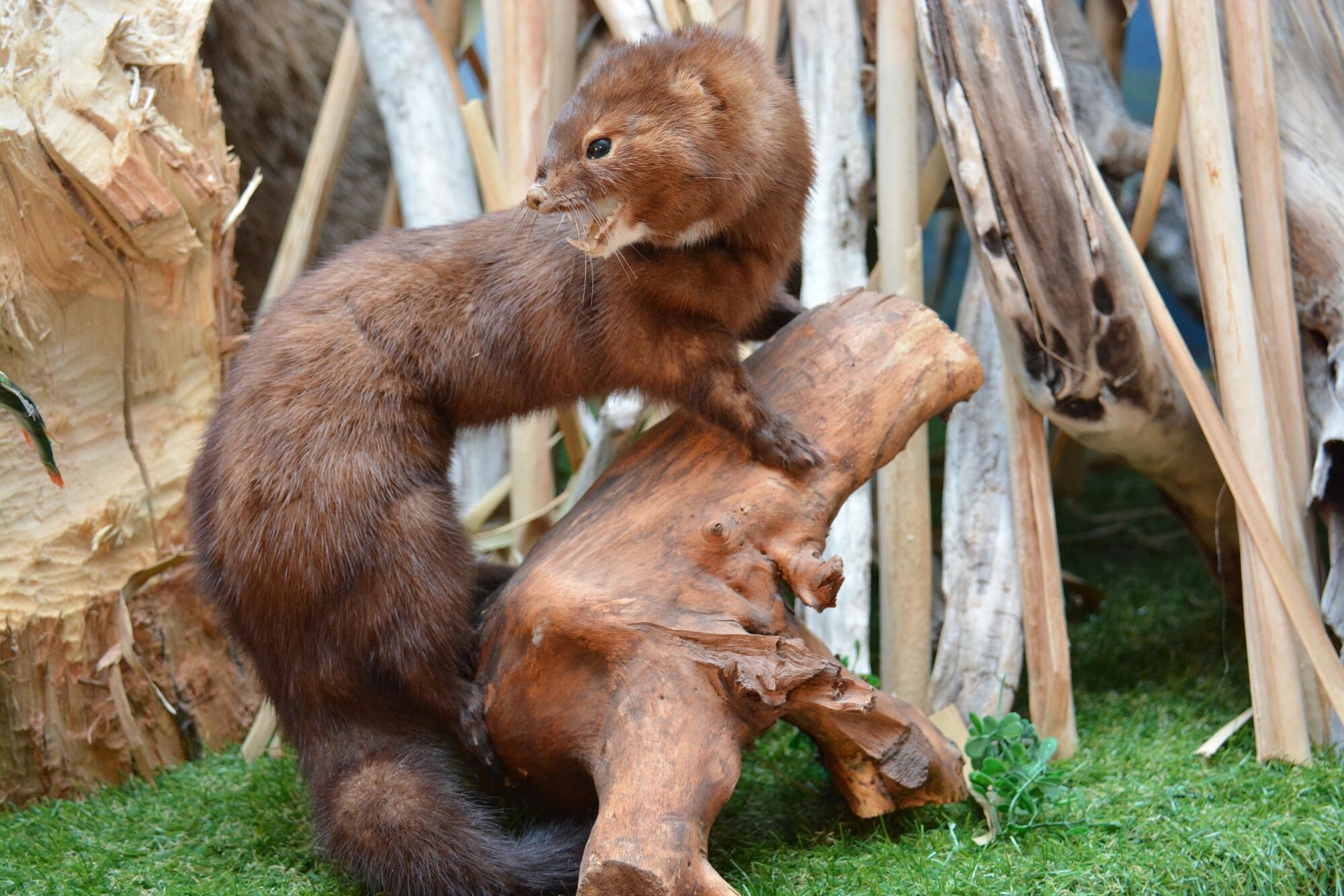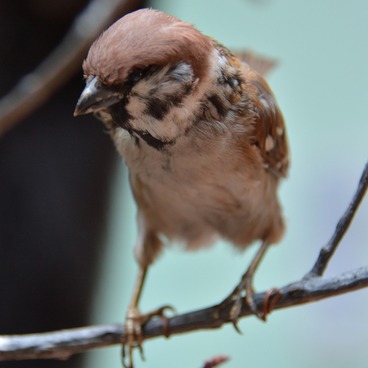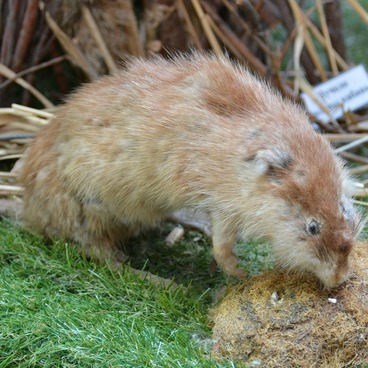The mink is a carnivorous mammal in the family Mustelidae /ˌməˈsteləˌdē/. It is a small animal measuring up to 50 centimeters and an elongated and roll-like body. Its tail measures between 15 and 18 cm. The mink’s snout is narrow with small ears almost invisible in the dense fur. The lively and expressive eyes resemble black buttons. The short limbs are covered with fur, and the toes are webbed. The mink’s closest relatives are the polecat, weasel, and stoat.
The mink’s coat has short and smooth fur so dense and well-protected that it does not get wet even when the animal spends much time in the water. The change of season does not affect the fur structure. The coat is mostly single-colored and varies from reddish to dark brown, almost black. The belly typically has a paler shade, while the legs and tail are more intensive in color. There is a white mark on the mink’s chin that covers its lower and upper lips. Sometimes, there is a similar color on the animal’s chest.
The mink is world-renowned for its beautiful fur and recognized as a real “queen” among fur game. Over the last 150 years, the mink population has shrunk dramatically, and many countries take measures to protect the species and increase its population. It has become a modern hobby to tame the willful animal because it can be entertaining due to its natural charm and playful manner.
The mink feeds on almost all small animals found in water and on the waterside. The core of its diet’s core is represented by mouse-like rodents, fish, amphibians, crawfish, water insects, and shellfish. In the countryside, the mink can prey on poultry and feed on food waste if there is not enough prey. The mink likes its prey fresh but always stores food before it gets cold.
Typically, the mink is active at night but can prey in the daylight. It is a perfect swimmer and diver. In water, it moves in jerks because it paddles with all paws at once. When moving on land, the mink appears to be jumping. The mink is a poor climber, and only a severe danger can make it climb a tree or a bush.
When in a joyful mood, this silent creature gives off clucking sounds like a chicken; when alarmed, though, it hisses, chatters, and chirps.
The mink’s coat has short and smooth fur so dense and well-protected that it does not get wet even when the animal spends much time in the water. The change of season does not affect the fur structure. The coat is mostly single-colored and varies from reddish to dark brown, almost black. The belly typically has a paler shade, while the legs and tail are more intensive in color. There is a white mark on the mink’s chin that covers its lower and upper lips. Sometimes, there is a similar color on the animal’s chest.
The mink is world-renowned for its beautiful fur and recognized as a real “queen” among fur game. Over the last 150 years, the mink population has shrunk dramatically, and many countries take measures to protect the species and increase its population. It has become a modern hobby to tame the willful animal because it can be entertaining due to its natural charm and playful manner.
The mink feeds on almost all small animals found in water and on the waterside. The core of its diet’s core is represented by mouse-like rodents, fish, amphibians, crawfish, water insects, and shellfish. In the countryside, the mink can prey on poultry and feed on food waste if there is not enough prey. The mink likes its prey fresh but always stores food before it gets cold.
Typically, the mink is active at night but can prey in the daylight. It is a perfect swimmer and diver. In water, it moves in jerks because it paddles with all paws at once. When moving on land, the mink appears to be jumping. The mink is a poor climber, and only a severe danger can make it climb a tree or a bush.
When in a joyful mood, this silent creature gives off clucking sounds like a chicken; when alarmed, though, it hisses, chatters, and chirps.



